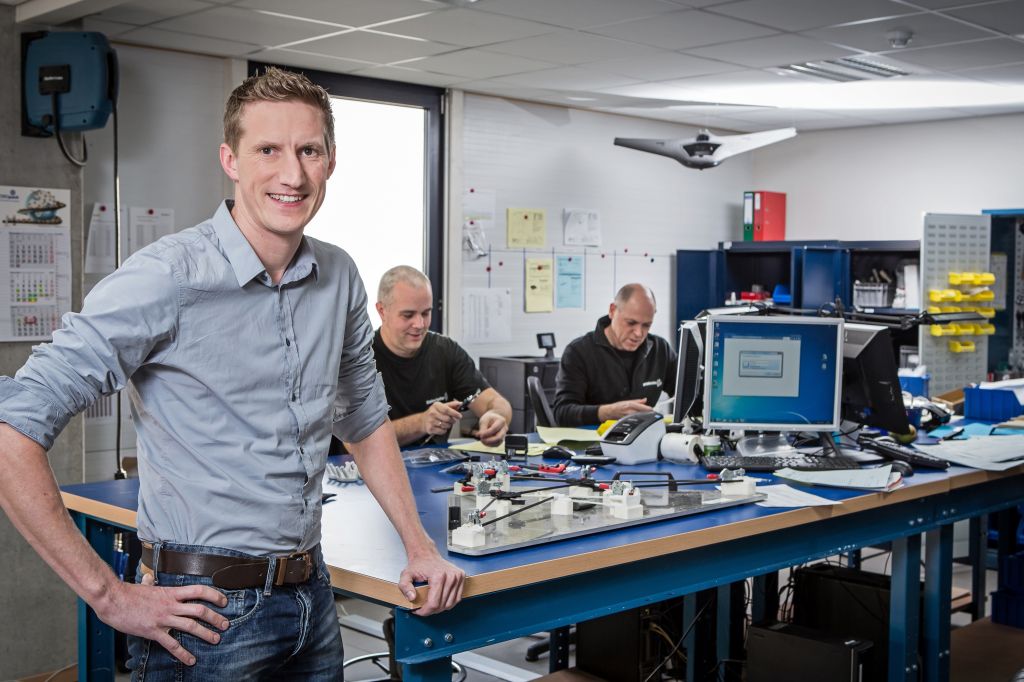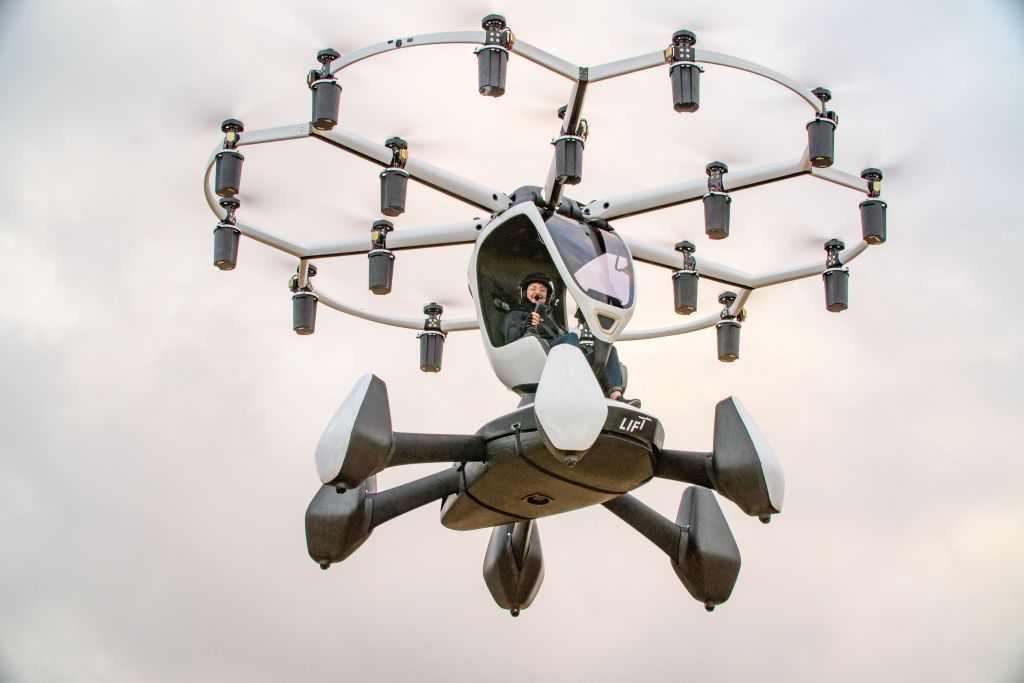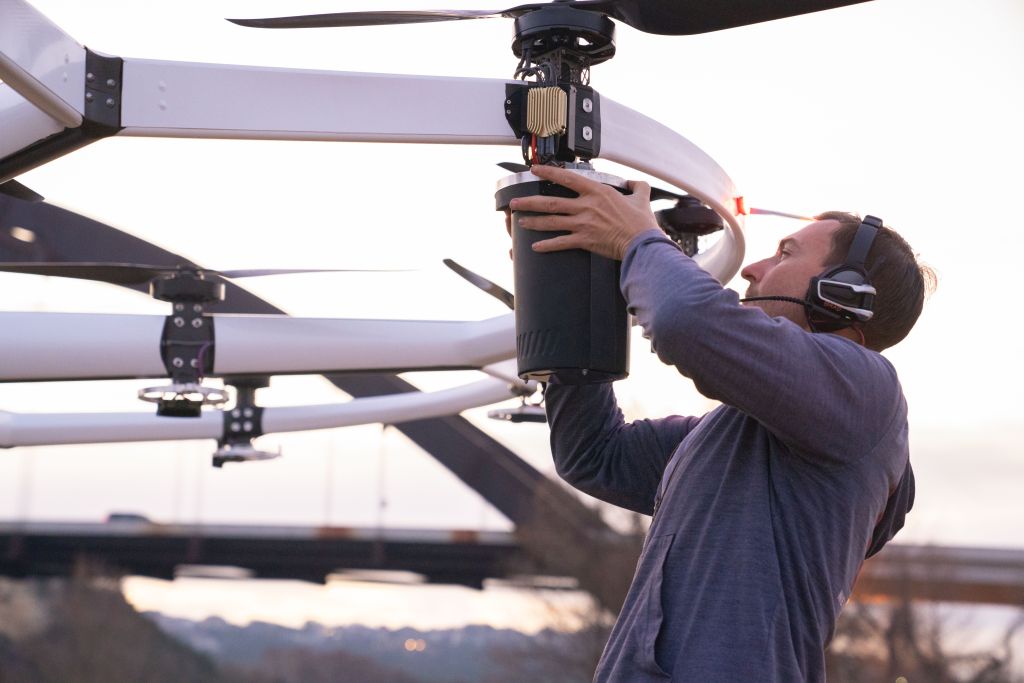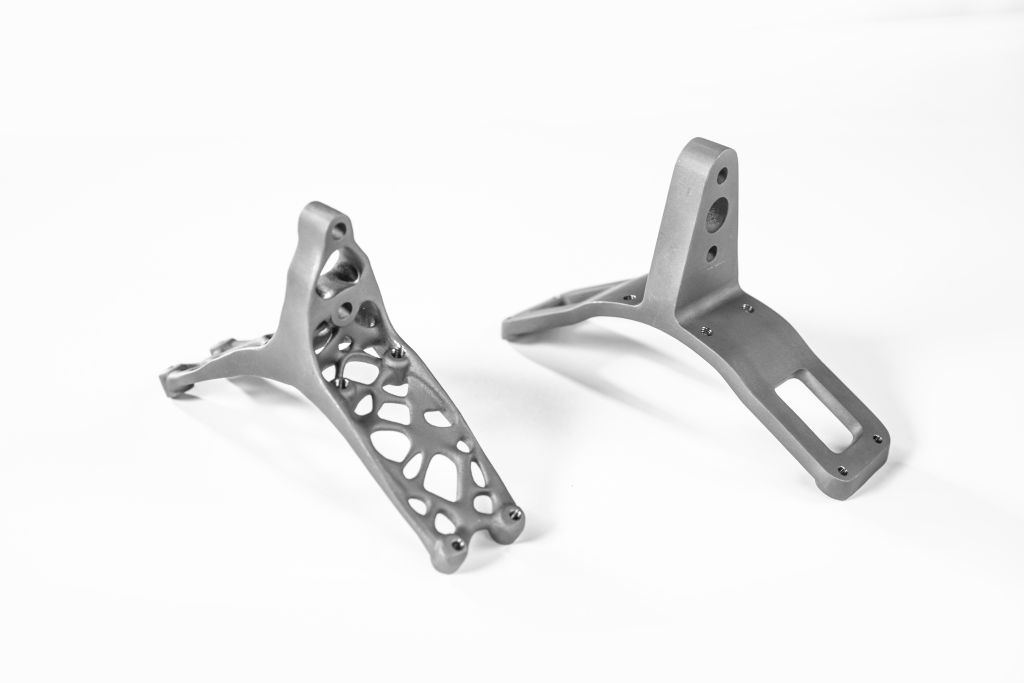Advancing eVTOL with additive

Ed Hill talks to Erik de Seeuw, market manager manufacturing at additive manufacturing experts Materialise and Balazs Kerulo, chief engineer at LIFT Aircraft, about the development of the HEXA eVTOL, a single-seat, semi-autonomous personal aerial vehicle.
Described as a new development in personal flight the LIFT eVTOL HEXA rotorcraft utilises distributed electric propulsion (DEP) technology, autonomous and fly-by-wire flight control systems to create what has been called a ‘drone for the people’. Operating from so called ‘Vertiports’ it is claimed customers who hire HEXA will be able to pilot it on point-to-point urban routes with less than an hour’s training, at a tenth of a cost of a helicopter and with zero COâ‚‚ emissions. To hasten the design, development and manufacturing of the aircraft, LIFT turned to additive manufacturing (AM) and generative design experts Materialise to help create an ultralight single person airborne platform and turn concept into reality.
Q) Firstly, can you explain the LIFT concept?
LIFT’s baseline vision is to democratise flight. They first looked to build an autonomous one person carrying drone to give people the experience of flying, without requiring a pilot’s licence. Initially, LIFT is opening Vertiport locations in geospatially mapped and geofenced flight areas. In case of emergency, LIFT mission control can remotely take over and land the aircraft.

As LIFT expands to allow point-to-point flights, they will focus on Vertiport-to-Vertiport routes where driving is difficult or impossible. Building LIFT’s HEXA vehicle in a modular way means it can be adapted for other purposes in the future. The quickest way to achieve this is through AM, which makes the process of adapting parts for other solutions easier and faster.
Q) Why choose AM as the manufacturing solution compared to more conventional methods? What are the certification requirements for parts using this method?
Early in the process, the LIFT team identified an ‘ultralight aircraft’ category in the US as their ideal go-to-market strategy. eVTOLs classified as ultralight require no FAA/EASA certification and no pilot’s licence to fly, a perfect fit for LIFT’s ambition to democratise flight. But designing such an aircraft needed a new approach.
LIFT approached Materialise to help it solve its design challenges – delivering fast iterations of these designs to fit specific requirements without any compromise whatsoever on safety. This was a huge design challenge when taking into consideration the number of engines required per aircraft (18) and all the safety measures involved such as reinforcing the most critical joints of its overhead rotor plane or ensuring structural integrity should a parachute need to open for an emergency landing.

Certification is not necessary, due to the category in which the HEXA aircraft sits. However, LIFT is being supported by the US Air Force who are able to advise on safety and airworthiness. For future, expanded operations, LIFT will pursue certification of its aircraft. For that reason, it is essential that all elements of the product pass incredibly high safety standards.
LIFT was aware that AM is still considered a novel technology in aerospace. However, both Materialise and LIFT went through the design and production processes in a very pragmatic way to alleviate any concerns over the technology or end products. In fact, part of the reason LIFT chose to use AM is because the team understands that AM can be a very efficient way to create these parts now and in the future.
AM enables LIFT to accelerate the product development and to switch to part production without changing the manufacturing method. Materialise is able to quickly supply parts according to the quantity required by LIFT and on short notice as a change of production tools is not required when manufacturing different part geometries. AM is not only a prototyping tool, but a key production process to build the lightweight aircraft.
Q) How did the generative design work in tandem with the 3D printing? Do you just opt for the best functional design or is there an element of aesthetics to be considered too?
Most of the 3D printed parts are invisible to the naked eye so functional design was the prime target. That means ensuring reliability, quality and repeatability of each part Materialise designed and manufactured. Secondly, those parts had to be lightweight. This was an imperative element for every part used to build HEXA.

As AM supports quick iterations, LIFT decided to split the prototyping and optimisation steps into two. By the time the AM expertise from Materialise’s design and engineering team was fully exploited, the functionality and maintainability of the structural AM parts were field-tested already. During the optimisation sprint, Materialise supplied data topology optimisation with extensive simulations of the print process for already validated load cases to make sure that the geometry chosen was reliable and achieved optimal material properties.
Q) What is the metallic/composite ratio of the materials used in the aircraft?
The aircraft is made up of full titanium alloy, composites and carbon fibre. The airframe is built almost entirely from carbon fibre. All parts that are shaped too complex to be built out of composite contain metal. With the focus on building a lightweight aircraft, every gram counts.
Q) How many iterations using this method were produced? Do these design and manufacturing methods mean the number is significantly reduced?
The beauty of AM is, that the number of iterations doesn’t matter like it does with other manufacturing methods. AM is flexible in adopting a new iteration because there’s very little required to do it. It’s less about the number of iterations and more about the speed at which AM gets to the end result.

In addition, most iterations happen in the design phase before any printing is done, which supports rapid changes. Materialise created lots of different parts on the aircraft using AM but one to highlight is the ENDY bracket component. The final product was the third iteration to be designed and the first to be printed.
Q) How did the relationship between Materialise and LIFT work?
LIFT is a very open-minded company. Both Materialise and LIFT look at the big goal that needs to be achieved, which means any hurdles faced along the way could easily be taken care of. The LIFT team is lean, but growing and scaling, so they seek stable suppliers that can match their growing demand over time, making Materialise a key supplier for its project.
Q) Do you think the wider aircraft manufacturing industry can learn lessons from this approach?
The urban air mobility sector and the traditional aerospace industry are both looking for ways to integrate AM as a manufacturing technology for specific end parts. Right now, it’s primarily about lightweight designs helping to save energy or fuel and using the advantages AM offers regarding flexible batch size and supply chains. AM supports the development of completely new part designs and can help to speed up the development of new aircraft technologies. Materialise works with leading companies in urban air mobility sector as well as with commercial brands like Airbus to lower the hurdles in adopting AM with in the industry.
Q) How is the LIFT programme and HEXA aircraft developing?
LIFT flew full-scale prototype aircraft starting in 2018 and has been flying production aircraft since 2019. The company is currently flying in partnership with the US Air Force and will launch customer flights in 2022.











